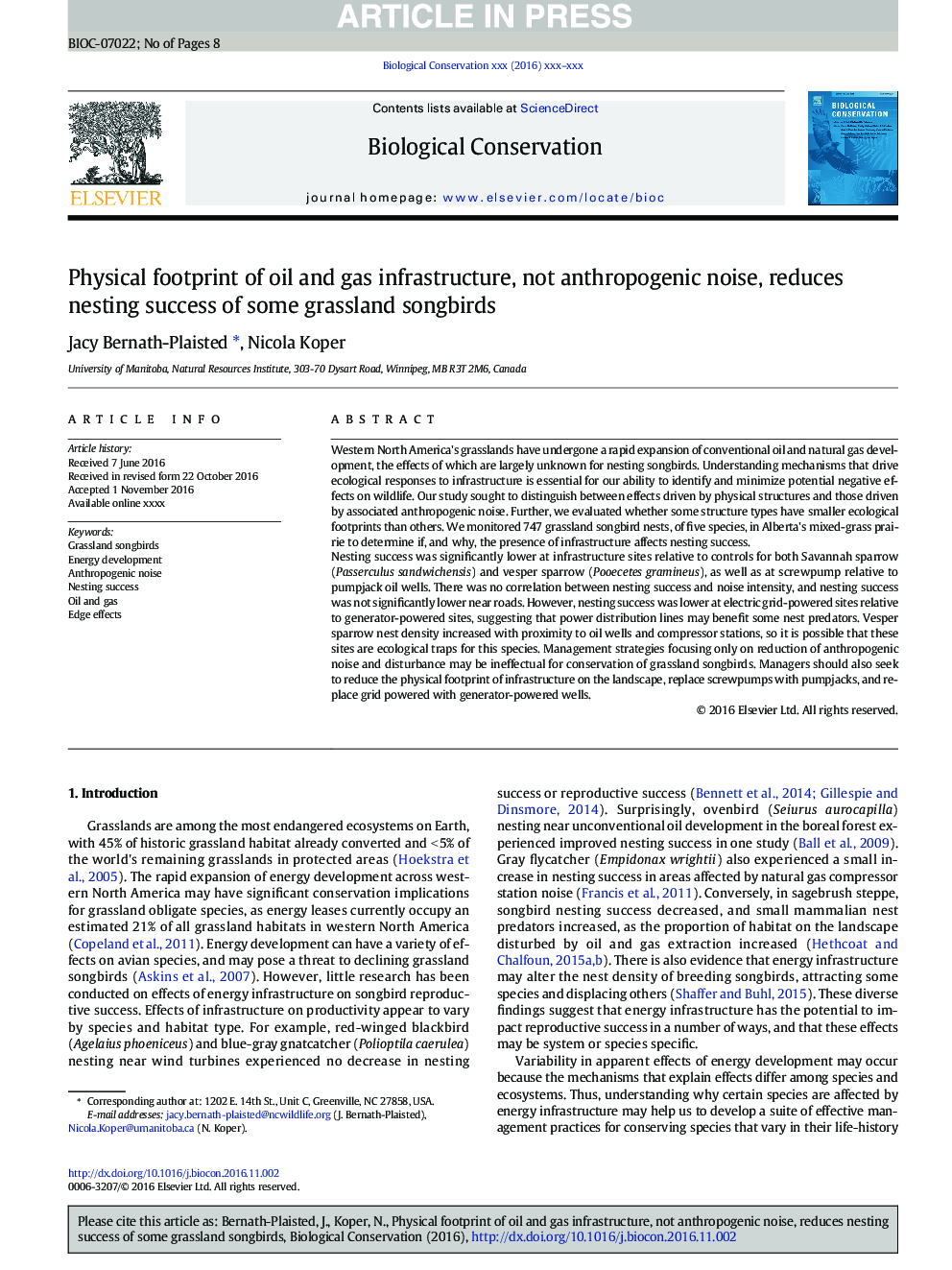| Article ID | Journal | Published Year | Pages | File Type |
|---|---|---|---|---|
| 5743421 | Biological Conservation | 2016 | 8 Pages |
Abstract
Nesting success was significantly lower at infrastructure sites relative to controls for both Savannah sparrow (Passerculus sandwichensis) and vesper sparrow (Pooecetes gramineus), as well as at screwpump relative to pumpjack oil wells. There was no correlation between nesting success and noise intensity, and nesting success was not significantly lower near roads. However, nesting success was lower at electric grid-powered sites relative to generator-powered sites, suggesting that power distribution lines may benefit some nest predators. Vesper sparrow nest density increased with proximity to oil wells and compressor stations, so it is possible that these sites are ecological traps for this species. Management strategies focusing only on reduction of anthropogenic noise and disturbance may be ineffectual for conservation of grassland songbirds. Managers should also seek to reduce the physical footprint of infrastructure on the landscape, replace screwpumps with pumpjacks, and replace grid powered with generator-powered wells.
Related Topics
Life Sciences
Agricultural and Biological Sciences
Ecology, Evolution, Behavior and Systematics
Authors
Jacy Bernath-Plaisted, Nicola Koper,
